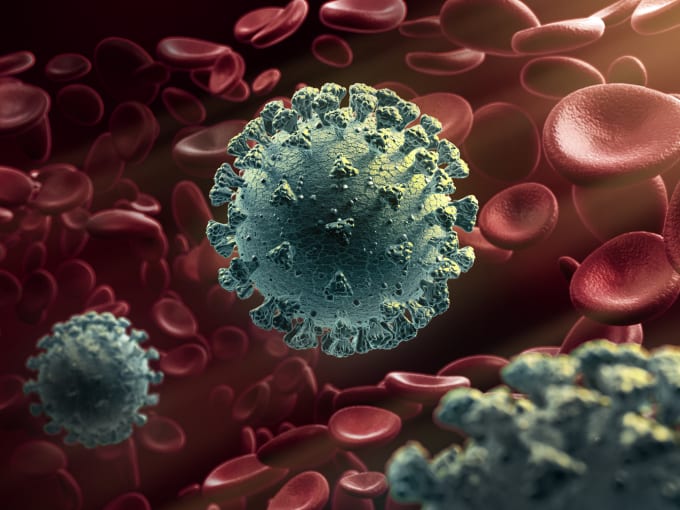All in one: Deciphering the COVID-19 immune response at the single cell level with Multiomic Cytometry

While scientists have made strides in learning about the pathogenesis of COVID-19, they are still unclear as to precisely what molecular and other factors contribute to the severity of infection. One key piece to solving this puzzle is the peripheral blood. Previous studies show a complex network of immune response in the peripheral blood after infection by SARS-CoV-2, which can be mined for clues. To better understand this complicated, but coordinated, immune response—especially as it pertains to mild versus severe disease—scientists are turning to the increased resolution of single cell analyses.
In a recent publication in Nature Medicine led by Muzlifah Haniffa, PhD, a Wellcome Trust Senior Research Fellow at Newcastle University, a team of scientists used 10x Genomics single cell multiomic analysis to study the immune response in the peripheral blood among a cohort of 130 patients (1). Read more to learn about their findings as well as how these freshly uncovered single cell profiles may help scientists identify new drug targets to treat COVID-19.
The power of Multiomic Cytometry
While many studies examining infection and immunity of SARS-CoV-2 have already been performed, there remains a lot to be known regarding why some cases remain asymptomatic or mild and others progress to moderate or severe and even critical disease. In fact, studies have shown a complex immune response in the blood, one that is not necessarily linear. For example, one study showed that, in severe disease, lymphopenia is accompanied by reduced interferon (IFN)-γ production (2). However, other studies showed that, in moderate to severe disease, there was an expansion of highly cytotoxic effector T-cell subsets along with increased expression of markers typically associated with an exhausted phenotype in CD8+ T cells (3, 4).
Dr. Haniffa, a member of the Human Cell Atlas initiative, applies single cell genomics to study the developing immune system. To improve our understanding of the immune response in both asymptomatic and symptomatic COVID-19, she and her team performed Multiomic Cytometry on over 780,000 cells from a cross-sectional cohort of 130 patients across three UK medical centers in Newcastle, Cambridge, and London. Using Chromium Single Cell Immune Profiling with Feature Barcode technology for Cell Surface Protein, they performed integrated single cell transcriptome, cell surface protein, and T-cell and B-cell antigen receptor repertoire analysis on 781,123 peripheral blood mononuclear cells (PBMCs) from individuals with asymptomatic, mild, moderate, severe, and critical disease.
Together, the gene expression and cell surface protein marker data allowed them to define 18 cell subsets, and subclustering analysis further teased out an additional 27 cell states. Importantly, the clusters that were unique to their study—no other team has yet to see them—were proliferating monocytes, innate lymphoid cell subpopulations, and isotype-specific plasma cells. Keeping in line with the body’s typical response to viral infections, they saw type I/III IFN response gene expression in monocytes, dendritic cells (DCs), and hematopoietic stem and progenitor cells (HSPCs) across the different levels of COVID-19 disease severity, but not in controls. Interestingly, they saw proliferating lymphocytes, proliferating monocytes, platelets, and mobilized HSPCs as disease severity increased—including expanded plasmablasts and B cells in severe and critical disease.
COVID and downstream effects on hematopoiesis
Transcriptome and surface protein analysis of blood mononuclear phagocytes revealed SARS-CoV-2 infection led to changes in the hematopoiesis process. Among CD34+ HSPCs, they identified six different clusters. Of these, megakaryocyte progenitors comprised ~5% of the CD34+ HSPCs in all symptomatic people—these cells were not found in healthy and asymptomatic patients’ blood.
Normally, peripheral blood is not where hematopoiesis occurs, so this discovery, they believe, shows the extent of COVID-influenced changes to hematopoiesis. Based on previous observations, they hypothesize that, as disease severity increases, megakaryocyte progenitors increase, leading to increased platelet activation, which in turns leads to increased movement of circulating monocytes into the lung space to replace macrophages that have been depleted fighting SARS-CoV-2 infection.
Balancing act: Complex T-cell and B-cell populations reveal insights
While there were complex changes in the composition of peripheral T cells in the blood after SARS-CoV-2 infection, they saw a balance between protective versus pathogenic adaptive immune response. Transcriptomic analysis revealed 11 clusters of CD4+ T cells, CD8+ T cells, and innate-like T cells. Consistent with other studies (5, 6), CD4+ and CD8+ T cells expanded as disease became more severe while there was a reduction of certain innate-like T cells.
They identified nine clusters of B cells and plasma cells, and generally saw less expansion of plasmablasts and plasma cells in critical and severe disease than in moderate and mild disease, in contrast to previous studies. At the same time, they found the largest expansion of circulating follicular helper T (TFH) cells in asymptomatic patients. Because findings from other work have shown that TFH cells are necessary for optimal antibody response (7), their data suggests that a coordination between T-cell and B-cell responses that occurs during asymptomatic and mild disease is lost in severe and critical cases.
T-cell receptor clonality data revealed that CD8+ effector T cells were the most clonally expanded, their numbers increasing with disease severity. They suspect that these additional effector T-cell clones include specific but short-term T cells that may contribute to out-of-control inflammation.
Unpacking their data regarding B-cell receptor (BCR) clonality, they saw increased clonal expansion in symptomatic cases. Their data also shows different BCR clonality and mutation frequencies between men and women, partly explaining potential mechanisms behind different outcomes for men and women with COVID-19.
Multiomic analysis enables future translational studies
While much research into how infection by SARS-CoV-2 impacts the immune response has led to increasing numbers of therapies, knowing more about the mechanisms behind differences in disease severity among mild, moderate, and severe disease is crucial to targeting improved therapies to those who need them most. This study not only offers a single cell map of the peripheral immune response, helping to identify future translational targets, but showcases how Multiomic Cytometry at the single cell level enables integrated, larger-scale studies.
To learn more about Dr. Haniffa’s research, which looks broadly at how developmental immune programs may be related to disease later in life, view her webinar, “Single-Cell Genomics Decodes the Developing Human Immune System.”
To explore the possibilities of single cell multiomic analysis, learn more about Multiomic Cytometry while browsing our resources, or visit the 10x Genomics Immunology Gateway.
References:
- Stephenson E, et al. Single-cell multi-omics analysis of the immune response in COVID-19. Nat Med, 2021.
- Chen G, et al. Clinical and immunological features of severe and moderate coronavirus disease 2019. J Clin Invest 130: 2620–2629, 2020.
- Zhang J-Y, et al. Single-cell landscape of immunological responses in patients with COVID-19. Nat Immunol 21: 1107–1118, 2020.
- Liu C, et al. Time-resolved systems immunology reveals a late juncture linked to fatal COVID-19. Cell, 2021.
- Ren X, et al. COVID-19 immune features revealed by a large-scale single-cell transcriptome atlas. Cell, 2021.
- Parrot T, et al. MAIT cell activation and dynamics associated with COVID-19 disease severity. Sci Immunol 5: eabe1670, 2020.
- Crotty ST. T follicular helper cell biology: a decade of discovery and diseases. Immunity 50: 1132–1148, 2019.
